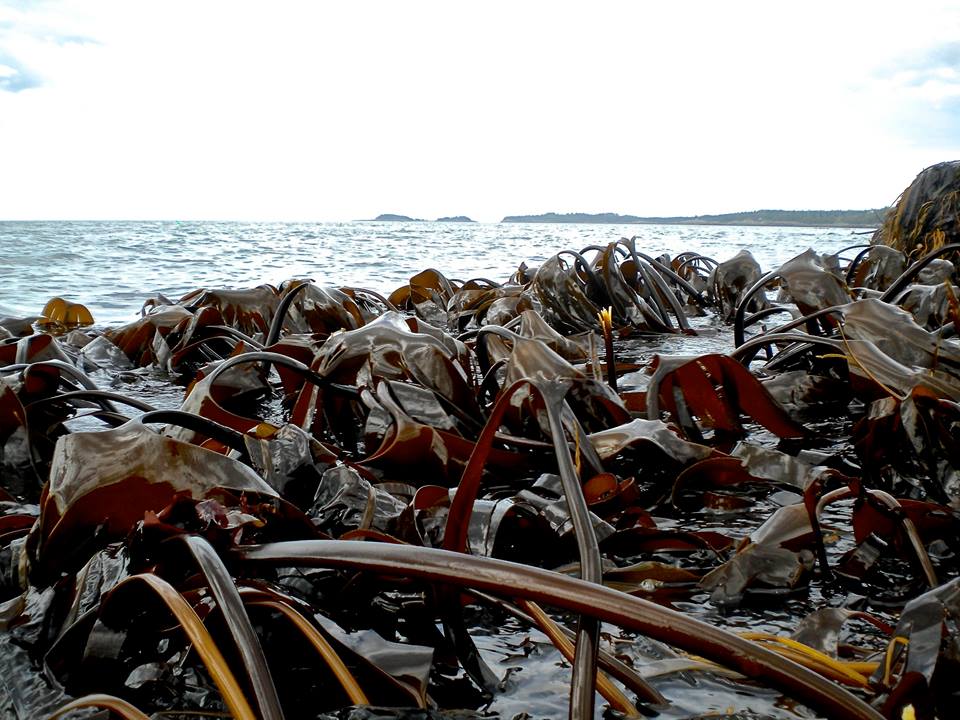kombu (Laminaria digitata)
The Japanese word Kombu refers to a sub-family of seaweeds known to western cultures as Kelp, and there are many species that can be used interchangeably in the kitchen. Kombu forms dense underwater forests in areas characterized by deep swells and active surf. The harvest is a rodeo-esque balancing act between the algae, the harvester, and the incoming waves pushing the boat towards nearby rocks and ledges.
Kombu contains a broad spectrum of vitamins, minerals, and trace elements, and has the highest iodine content of any seaweed we harvest. The glutamates in kombu enhance the flavor of other ingredients and contribute a pleasant savory taste to food, known in Japan as umami. Kombu also contains high levels of fucoidan and alginate, complex polysaccharides that have been shown to stimulate the immune system, reduce inflammation, and aid in the removal of heavy metals from the body.
Cut the strips of dry seaweed into bite-sized pieces with scissors and add to rice, soups, stews, chowders, and pot roasts. Added to a pot of beans, kombu will reduce cooking time, thicken the texture, and enrich the overall flavor of the finished dish. Cook for 30-45 minutes to tenderize, or simmer all day to dissolve.
Flavoring Dried Beans with Seaweed - Cook’s Illustrated

